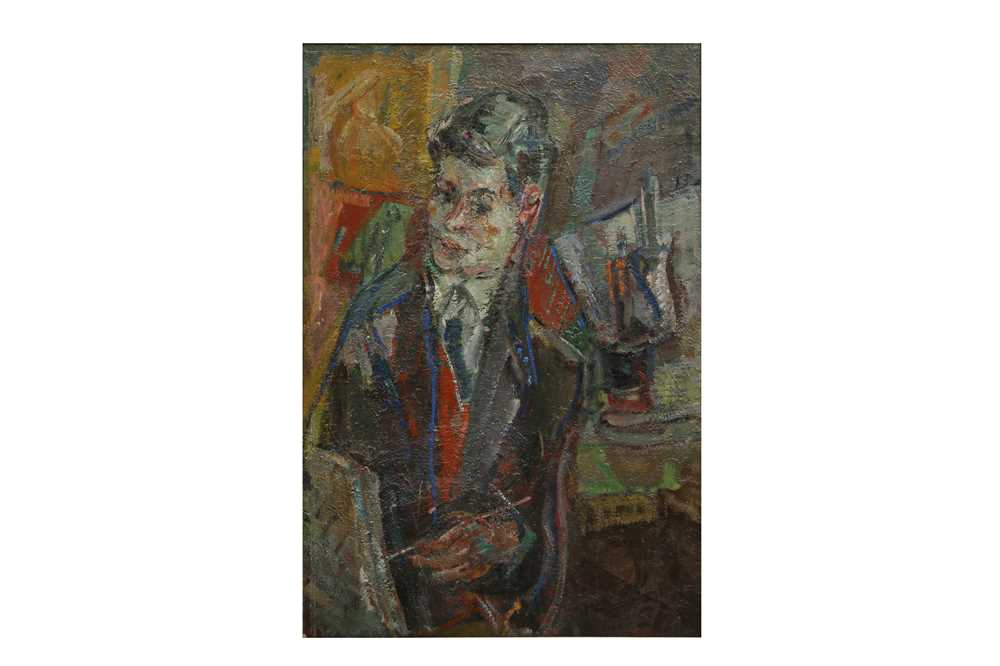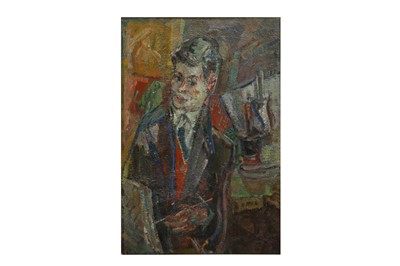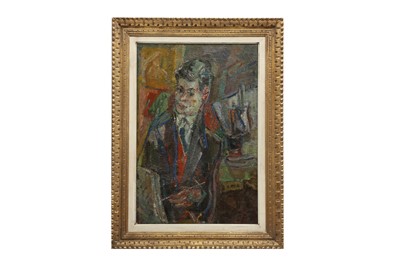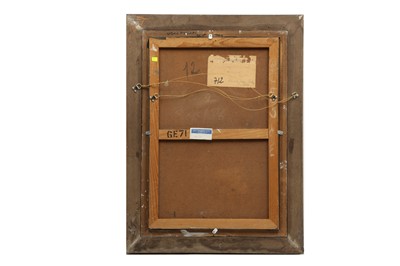30th Mar, 2021 14:00
19th & 20th Century Paintings and Works on Paper, including Portrait Miniatures
MICHEL KIKOÏNE (FRENCH/RUSSIAN 1892-1968)
MICHEL KIKOÏNE (FRENCH/RUSSIAN 1892-1968)
Portrait of Jacques Chalom
titled Portrait of Jacques Chalom (on the artist's label on the reverse)
oil on board
73 x 49.5 cm (28 3/4 x 19 1/2 in)
Executed circa 1964-1965
PROVENANCE:
Sale, Christie's, London, 27 June 1986, lot 572
Galerie Marek, Paris
Private collection, London, by whom purchased from the above in the early 1990s
LITERATURE:
J. Cassou, Kikoïne, Lausanne, 1973, no. 712, illustrated p. 349
Jacques Chalom des Cordes (b.1935) is a contemporary artist and the son of Samy Chalom, a leading art dealer in Paris during the Ecole de Paris.
The Ecole de Paris (lots 302-312)
Paris had long been a mecca for artists, thanks historically to the unrivalled reputation of the Ecole des Beaux-Arts, the unparalleled importance of the annual Salon as an exhibiting platform and the patronage of the French State. But with the advent of Modernism, long held classical canons were eclipsed by the energy of the emerging avant-garde. To cater for the proliferation of styles alternative exhibiting bodies proliferated, commercial galleries and dealers flourished, and the city saw an influx of artists from around the world as never before. By the mid-1920s Paris was home to an estimated 70,000 painters and sculptors, congregated mainly in the districts of Montmartre and Montparnasse.
Many of the artists were émigrés, who came to be known collectively as the Ecole de Paris, a term coined in 1925 by the art critic André Warnod, who used it specifically to reference the non-French avant-garde artists working in the French capital. Ecole de Paris artists were not characterised by a defining style, but worked closely alongside one another, exchanging creative ideas and employing a diverse range of techniques and styles.
In 1909 a sub-group of the Ecole de Paris was formed by Modigliani, Maurice Utrillo, Chaïm Soutine and Jules Pascin (known as the ‘Prince of Montparnasse’). They were disparagingly called les maudits (the cursed ones), bonded by their shared poverty which they reflected in the subject-matter and style of their often anguished and tormented subject matter.
The strong Jewish element of Ecole de Paris artists gathered pace with the arrival in Paris of Marc Chagall in 1910. Chagall settled in La Ruche, a complex of studios in Montparnasse. Together with fellow Russian Soutine, Chagall worked alongside other Jews including Michel Kikoine, Ossip Zadkine and Mané-Katz.
By the time the Second World War broke however, and with nationalism on the rise, artists associated with the Ecole de Paris were increasingly viewed as a threat to French tradition, especially by anti-semitic critics. By 1940 such artists were barred from exhibiting in France, many were forced to return to their homeland or leave for America, and by the 1950 Paris’s thriving art scene had largely been eclipsed by Abstract Expressionism and the New York School.
Do you have an item similar to the item above? If so please click the link below to request a free online valuation through our website.



